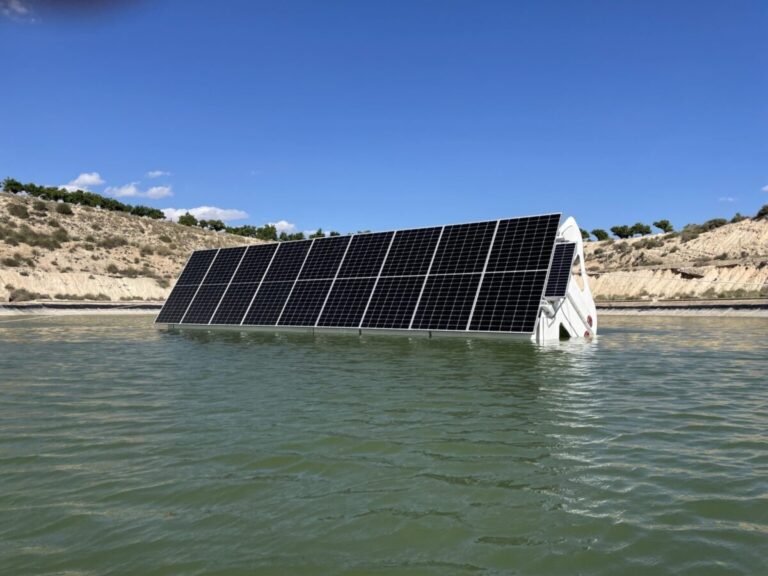Soltec has developed a floating PV tracker with pumps in the central tank for mobility and ballast, allowing operation in wind gusts above 100 km/h.
Soltec Innovations, the innovation unit of solar tracker manufacturer Soltec, has developed a floating solar tracker for reservoirs, irrigation ponds and other inland water bodies.
The new Flotus design is based on three main components: two longitudinal floats and a central floodable tank, which is responsible for regulating the east-west roll motion.
“We have redefined the traditional approach,” says Ignacio Melón, Managing Director of Soltec Innovations and head of the project. “The existing solutions in this segment were based on terrestrial photovoltaic structures on floats. With Flotus we started from a nautical structure equipped with photovoltaic modules, optimizing energy efficiency through better orientation and solar tracking.”
Soltec said a significant advantage of this technology is its ability to transmit the most light. The design of the plant, with followers in rows at least 2 meters apart, avoids shading of the modules during backtracking and, unlike traditional floating systems, allows the use of two-sided panels.
It said that robustness and stability are other strengths of Flotus. The central tank, equipped with pumps, not only provides mobility, but also acts as ballast, allowing the tracker to continue functioning even in wind gusts of more than 100 km/h. Flotus is notable for its east-west tracking system, typical of terrestrial horizontal solar trackers, and its advanced ship design.
The manufacturer said another advantage of Flotus over fixed floating structures is its ability to increase energy production by 15% to 25% depending on latitude, especially during the first and last hours of the day. Thanks to the cooling effect of water, Flotus also surpasses the production of terrestrial solar trackers.
Soltec claimed that “Flotus is particularly interesting for hybridizing hydraulic installations, maximizing the use of the already depreciated infrastructure for the evacuation of electrical energy.”
The company is now receiving initial expressions of interest from developers in Spain and the United States, with a view to implementing the first pilot projects next year.
This content is copyrighted and may not be reused. If you would like to collaborate with us and reuse some of our content, please contact: editors@pv-magazine.com.


